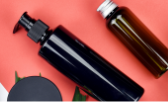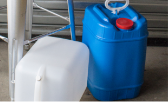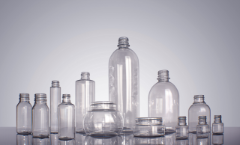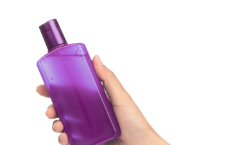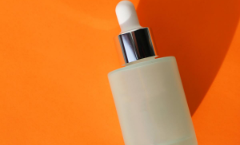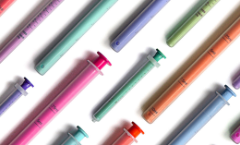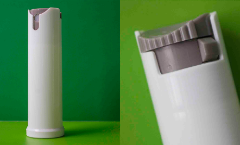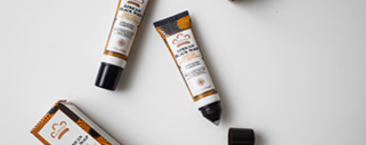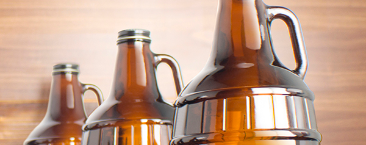Compact Emergency Preparedness: What to Pack in a Survival Jar
Compact Emergency Preparedness: What to Pack in a Survival Jar
Emergencies can happen at any time, anywhere, but being prepared can make a huge difference in how well you handle them. A complete emergency kit is a necessity, but complementing it with a compact, grab-and-go option, such as a survival jar, is also a good idea, giving you an option for when space is limited and time is short.
Basic Disaster Supplies Kit
Preparedness begins with the basics. Every household should have an emergency supply kit that includes the essentials to sustain each person for several days. Keep these items in airtight plastic bags and store them in a container that is easy to carry, such as a duffel bag or plastic bin.
Recommended essentials include:
- Water: One gallon jug per person per day for drinking and sanitation purposes
- Food: A several-day supply of non-perishable items like canned goods, protein bars, and dried fruits
- First Aid Kit: Include adhesive bandages, antiseptic wipes, and pain relievers.
- Lighting: Flashlights or headlamps with extra batteries
- Communication: Battery-powered or hand-crank radio for updates and alerts
- Tools: Multi-tool, wrench, or pliers for basic repairs
- Personal Protection: Whistle and dust mask to filter contaminated air
- Hygiene Items: Moist towelettes, garbage bags, and antibacterial gel for sanitation
- Essential Documents: Copies of IDs, insurance papers, and emergency contacts in a waterproof pouch
Additional Emergency Supplies
Once the essentials are covered, add items to fit your family's specific needs. Every household is unique, and customization can add an extra layer of safety and comfort.
Things you might consider adding to your basic emergency kit:
- Prescription medications and vitamins for ongoing medical needs
- Eyewear or contact lens solution
- Infant or pet supplies, such as formula, diapers, or pet food
- Cash in small bills for purchases during power outages
- Seasonal clothing suited to your region's weather
- Comfort and entertainment items, like a deck of cards or a small book
- Hygiene and feminine supplies to maintain comfort and cleanliness
Maintaining Your Kit
Preparedness is an ongoing process, not a one-time task. Once you have your emergency kit ready, keep your supplies fresh and your plan up to date.
- Replace expired food and water every six months.
- Test flashlights, radios, and batteries regularly to make sure that they still work.
- Review and refresh your personal items, including medications, important documents, and emergency contact information.
- Reassess your family's needs and adjust accordingly.
Kit Storage Locations
Where you keep your supply kits matters just as much as what's in them. Emergencies don't wait until you're in the right spot.
- Home: Store your main kit in a designated, easily accessible spot known to everyone.
- Work: Prepare a smaller kit with essentials like snacks, water, medication, and comfortable shoes in case you need to shelter in place.
- Car: Keep a compact kit or survival jar in the glove box or trunk, including a flashlight, blanket, and water pouches.
The Survival Jar
For flexible and compact preparedness, put together a survival jar, a small, portable kit designed to cover basic survival needs when carrying a complete emergency kit isn't practical or viable. Instead of replacing your larger kit, the survival jar complements it. It's perfect for hikers, commuters, travelers, or anyone who values being ready for short-term emergencies.
Suggested contents include:
- Mini first aid supplies (bandages, wipes, pain relievers)
- Waterproof matches or lighter
- Compact flashlight or glow stick
- Water purification tablets or iodine packets
- Protein bar or energy gel
- Whistle
- Emergency blanket
- Small multi-tool or folding knife
- Paracord or durable string
- Cash and a contact card
These items can fit neatly into a sturdy, waterproof container, such as a mason jar or bottle, making it an ideal companion for on-the-go preparedness.
Emergency Preparedness for Kids
Teaching children about emergency readiness helps them develop confidence and remain calm in uncertain situations. Making learning about preparedness interactive and fun can turn a potentially tedious task into an enjoyable family activity.
Kid-friendly preparedness activities include:
- Emergency Kit Scavenger Hunt: Have kids search for items for your emergency kit around the house and help assemble and store it.
- Map Challenge: Make a map of your home, mark safe meeting spots, and then practice getting to these spots from different rooms together.
- Emergency Drill Obstacle Course: Practice earthquake crawls, fire exits, or "stop, drop, and roll" exercises as part of an obstacle course.
- Story Time: Read about fictional emergencies and discuss smart responses.
- Family Role-Play: Simulate short power outages and assign responsibilities as practice for the real thing.
- DIY Mini Kits: Let kids decorate and personalize their own survival jars.
- Safety Trivia: Use flashcards to quiz them on emergency actions and contacts, and reward them for participating.
Resources for Children's Preparedness
- Making Emergency Preparedness Fun
- Kids' Emergency Preparedness Activity Guide
- Prepare With Pedro Activity Book
- Self-Care During and After a Crisis
- Safety Activity Ideas
Turning preparation into play encourages children to view readiness as empowering rather than frightening, making it easier for them to build lifelong safety habits.
Additional Preparedness Resources
- Preparing Your Family for Disasters
- Create Your Readiness Plan
- What Should You Keep in Your Car?
- Personal Emergency Notebook Checklist
- Make an Emergency Plan
- Emergency Preparedness Kit Checklists
- What Should You Bring When You Evacuate?
- Survival Basics: Emergency Kits
- Plastic Bottles for Emergency Kits
- Emergency Preparedness for People With Disabilities
- Stocking an Emergency Preparedness Kit







